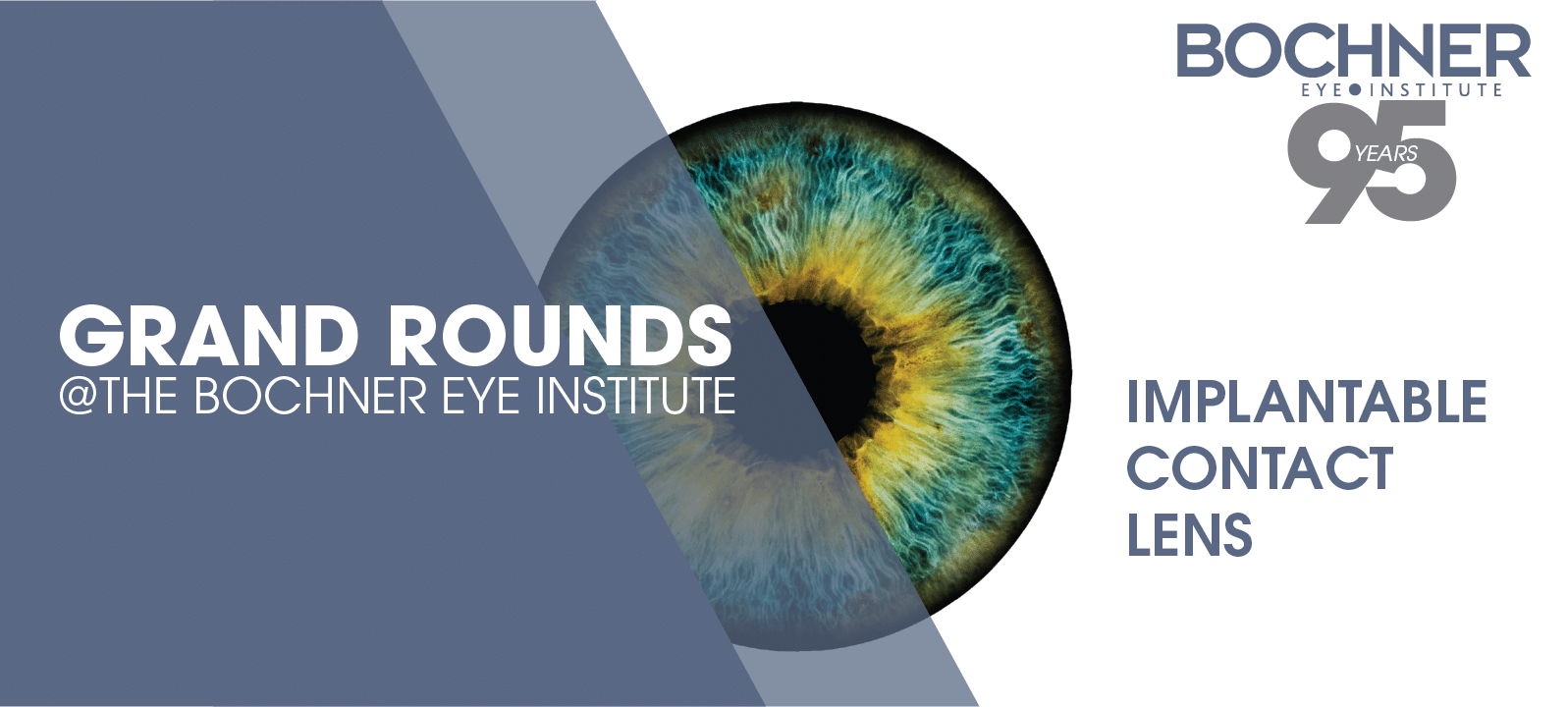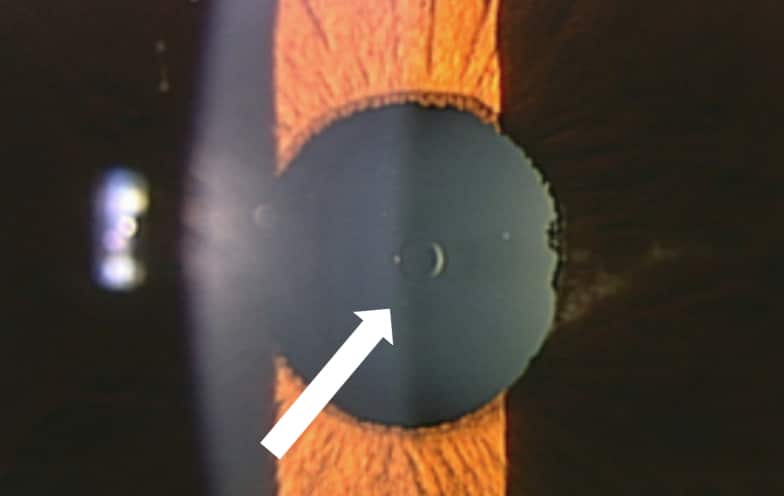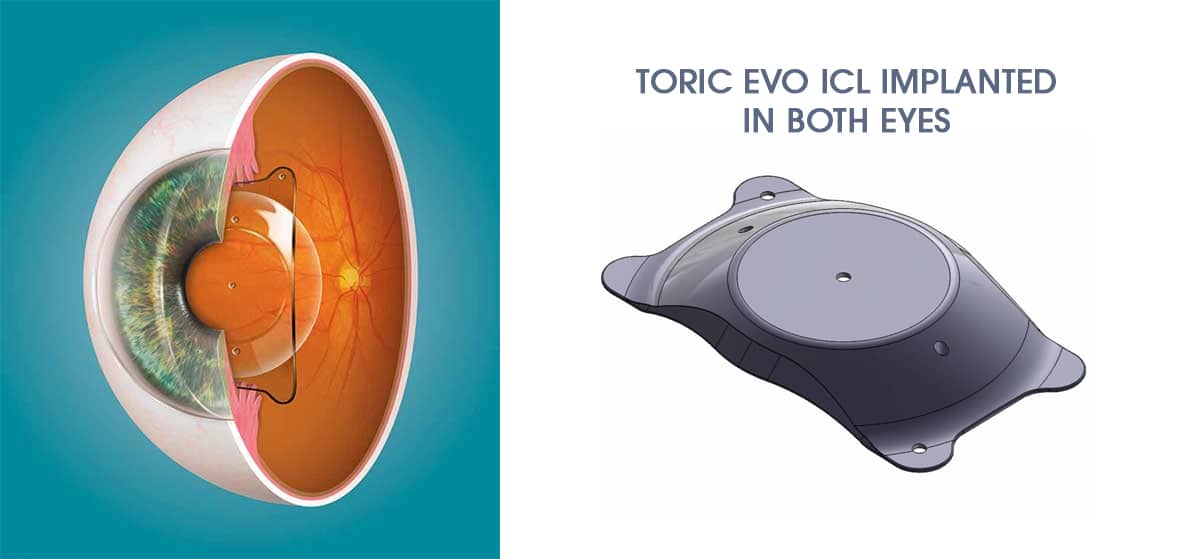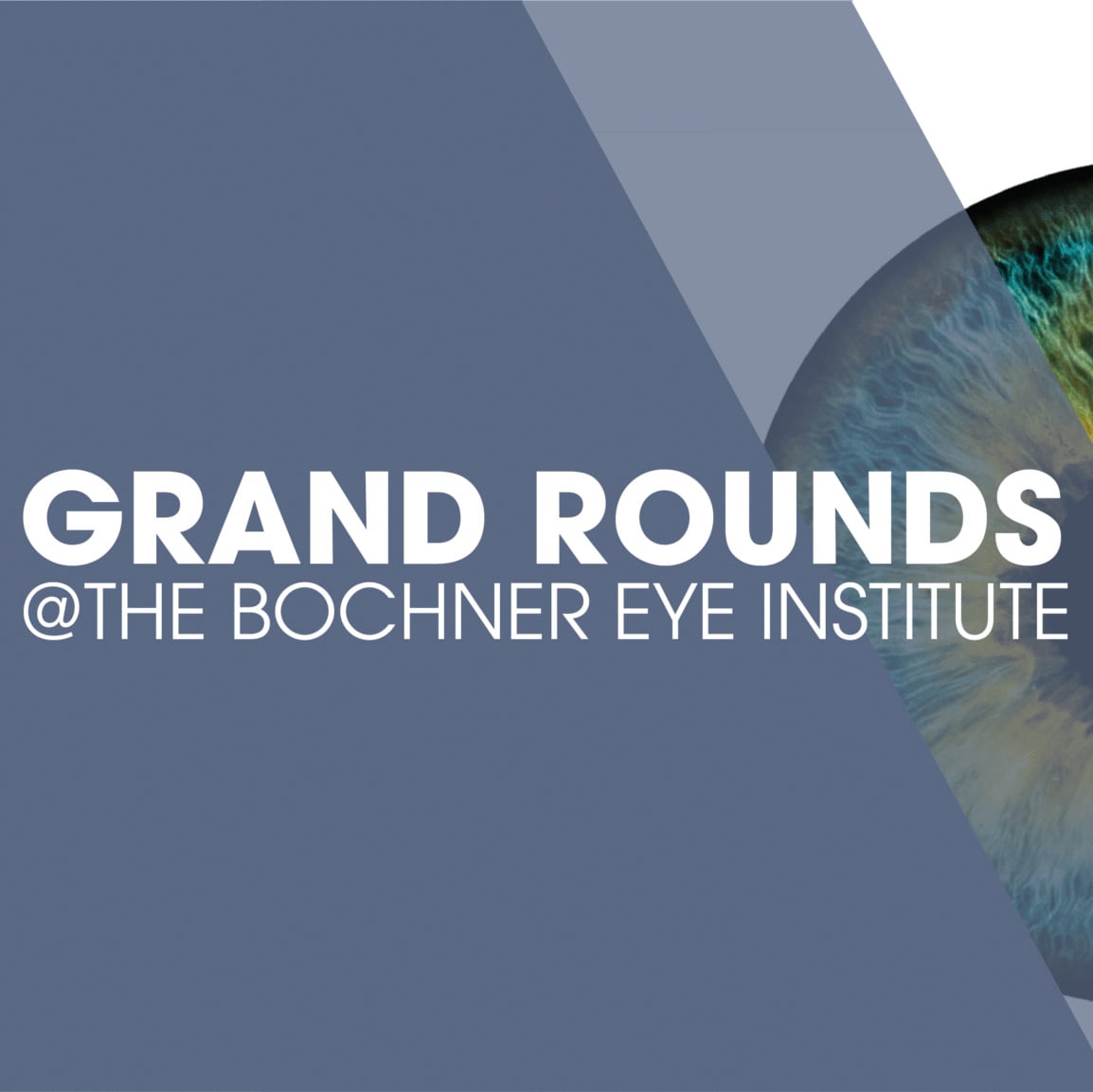
CASE OVERVIEW
A 27-year-old male with high myopia and a history of soft contact lens use was referred for refractive surgery. He had difficulty tolerating his soft contact lenses and was seeking to improve his uncorrected vision.
Best-corrected spectacle acuity was 20/20 in the right eye and 20/25 in the left eye. His refractive error was -12.00 -3.50 x 85 in the right eye and -15.50 -3.50 x 80 in the left eye.
Corneal tomography using the Pentacam revealed no signs of irregular astigmatism. The minimum corneal thickness was 535 microns in the right eye and 517 microns in the left. Anterior chamber depth was 2.85 mm in the right eye and 2.95 mm in the left. Both crystalline lenses were clear, and dilated fundus examination was normal.

SURGICAL OPTIONS FOR SPECTACLE AND CONTACT LENS INDEPENDENCE:
EVO Implantable Contact Lens™ (ICL) or Refractive Lens Exchange (RLE)
In general, we would not recommend RLE in a non-presbyopic, high myope with a clear crystalline lens. Due to the long axial length of 28.00 mm in the right eye and 29.25 mm in the left eye, and the absence of posterior vitreous detachment, there is a significantly increased risk of retinal tears and detachment. Pre-presbyopic high hyperopes, on the other hand, have shorter axial lengths and face a much lower risk of retinal complications.
The patient’s refractive error was too high for LASIK or PRK, as full correction with these methods could lead to significant corneal thinning and a risk of corneal ectasia.
PROCEDURE PERFORMED
The patient was an ideal candidate for the EVO ICL™, which features a central opening that eliminates the need for YAG iridotomies. Unlike RLE, the ICL procedure does not involve tissue removal, resulting in a lower risk of retinal detachment. However, all patients undergoing intraocular procedures are counseled about potential risks, including retinal detachment.

A toric EVO ICL procedure was successfully performed on both eyes without complications. Postoperative follow-ups were scheduled for the first day, one week, one month, and six months after surgery.
The patient achieved uncorrected visual acuity of 20/15- in the right eye and 20/20+ in the left eye. It is common for patients to experience improved best-corrected acuity after ICL, as the vision is corrected closer to the eye’s nodal point. He experienced mild halos in the early postoperative period, which gradually resolved.
10 KEY FACTS ABOUT THE EVO ICL:
- The procedure is reversible, though reversals are rarely requested.
- ICL corrects vision without removing natural tissue.
- It is typically used to correct high levels of myopia, hyperopia, and astigmatism. It can also treat lower refractive errors in cases of thin corneas or ectatic disease.
- The procedure is not dependent on corneal thickness, pupil size, or dry eye conditions.
- The collamer-based lens material is highly biocompatible and well tolerated.
- UV protection is integrated into the biocompatible lens material.
- The ICL is placed in the ciliary sulcus and vaults over the crystalline lens. Preoperative measurements ensure the correct ICL size for optimal vaulting.
- The EVO ICL’s central opening prevents pupillary block glaucoma by allowing fluid to flow through the optic, eliminating the need for YAG iridotomy. While this opening may slightly increase the risk of halos, they typically resolve within 4 to 6 months.
- Cataract formation after ICL implantation is rare, reported in less than 1% of cases. High myopes may develop cataracts earlier in life. If a cataract occurs, the ICL can be removed, the cataract extracted, and a posterior chamber implant inserted in one procedure.
- If patients are not satisfied with their uncorrected vision after ICL implantation, laser vision correction can be performed at no additional charge to enhance vision.


